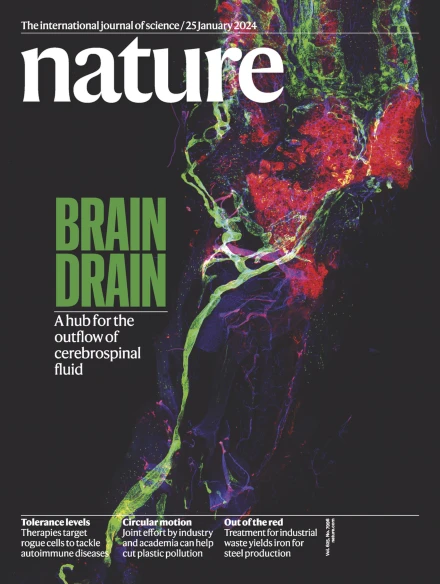隧穿光谱法测量H3S超导间隙
IF 50.5
1区 综合性期刊
Q1 MULTIDISCIPLINARY SCIENCES
引用次数: 0
摘要
几种富氢超导体已被发现具有前所未有的高临界温度1,2,3,4,这激发了对这些材料中超导性质的研究。尽管它们的宏观超导性质已经确立(1,5,6,7),但对配对机制的微观见解仍不清楚。本文通过隧道光谱测量表征了高温超导体H3S和氘超导体D3S的超导隙结构。隧穿光谱结果表明,H3S和D3S均具有全间隙结构,可以用单s波Dynes模型很好地描述,其间隙值2Δ分别约为60 meV和44 meV。此外,我们观察到另一个可能的贫氢HxS超导相的间隙特征在一个不良合成的硫化氢样品。我们的工作从微观角度为富氢超导体H3S的超导性提供了直接的实验证据。验证了声子介导的超导配对机制,为进一步理解富氢化合物高温超导的起源奠定了基础。本文章由计算机程序翻译,如有差异,请以英文原文为准。


Superconducting gap of H3S measured by tunnelling spectroscopy
Several hydrogen-rich superconductors have been found to show unprecedentedly high critical temperatures1–4, stimulating investigations into the nature of the superconductivity in these materials. Although their macroscopic superconducting properties are established1,5–7, microscopic insights into the pairing mechanism remains unclear. Here we characterize the superconducting gap structure in the high-temperature superconductor H3S and its deuterium counterpart D3S by performing tunnelling spectroscopy measurements. The tunnelling spectra reveal that H3S and D3S both have a fully gapped structure, which could be well described by a single s-wave Dynes model, with gap values 2Δ of approximately 60 meV and 44 meV, respectively. Furthermore, we observed gap features of another likely H-depleted HxS superconducting phase in a poorly synthesized hydrogen sulfide sample. Our work offers direct experimental evidence for superconductivity in the hydrogen-rich superconductor H3S from a microscopic perspective. It validates the phonon-mediated mechanism of superconducting pairing and provides a foundation for further understanding the origins of high-temperature superconductivity in hydrogen-rich compounds. Characterizing the superconducting gap structure in the high-temperature superconductor H3S by means of tunnelling spectroscopy reveals that it, as well as D3S, has a fully gapped structure, confirming the phonon-mediated mechanism of superconducting pairing.
求助全文
通过发布文献求助,成功后即可免费获取论文全文。
去求助
来源期刊

Nature
综合性期刊-综合性期刊
CiteScore
90.00
自引率
1.20%
发文量
3652
审稿时长
3 months
期刊介绍:
Nature is a prestigious international journal that publishes peer-reviewed research in various scientific and technological fields. The selection of articles is based on criteria such as originality, importance, interdisciplinary relevance, timeliness, accessibility, elegance, and surprising conclusions. In addition to showcasing significant scientific advances, Nature delivers rapid, authoritative, insightful news, and interpretation of current and upcoming trends impacting science, scientists, and the broader public. The journal serves a dual purpose: firstly, to promptly share noteworthy scientific advances and foster discussions among scientists, and secondly, to ensure the swift dissemination of scientific results globally, emphasizing their significance for knowledge, culture, and daily life.
 求助内容:
求助内容: 应助结果提醒方式:
应助结果提醒方式:


